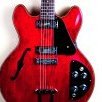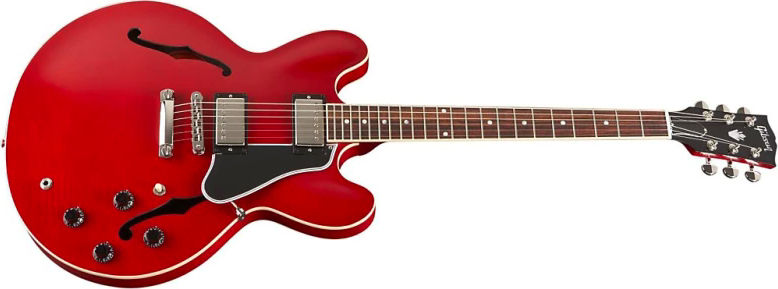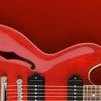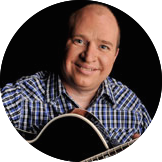Tips on Soloing;
Reproduced here is an article from the old Learn and Master Guitar website, courtesy of
Posted 07 March 2008 - 05:31 AM
The following article was written for 7th to 12th grade music students and contains some good suggestions:
Taking the spotlight with an improvised solo isn’t as difficult as it might seem. In fact, with a little bit of knowledge and a bit of “go for it” gusto, soloing can be exhilarating for you and your listeners.
By Dianne Spoto
There’s nothing more exciting for a performer than having that moment in the spotlight to shine. One way performers show their stuff is through improvising and taking solos. Solos allow a musician to have the spotlight all to him or herself, and to compose on the spot and express their own unique musical voice. Improvisation gives players an opportunity to show off instrumental prowess, musical intelligence and spontaneity.
However, for some, soloing on stage makes the thought of a root canal seem like fun. Either way, giving improvisation a go can enhance your confidence and build self-esteem, which translates directly to lots of other areas in your life. How can you go wrong with that? Read on for some hands-on tips and tricks to help you dig into the art of the solo and “let ’er rip!”
Practice Techniques: Tried and true prep exercises for before you hit the stage.
1. Listen
Listen to great solos on record. Crank up the volume on some rip-roaring, live solos from your favorite band. Now listen carefully and ask yourself these questions: What catches your ear with this solo? Is it the speed of the notes? The tone? Perhaps there is an incredible amount of expression or rhythmic complexity that makes the solo engaging. Discover for yourself what makes a solo exciting to you.
2. Transcribe
Take that solo that you dig so much and try to memorize it note for note. You can do this by learning to play or sing along to it by ear. But one way to learn the music on an even deeper level is to transcribe the solo by writing down every note and chord change on notation paper. This way, you will learn melody and chord structure and be able to play your own solos over those very changes in time.
3. Record
While you’re in your room practicing alone, turn on the recorder and let it run while you jam. You may be surprised to hear differences between the actual recording and the way you think you sound as you play. Listen to your solo and ask yourself the questions from step No. 1. You might just be pleasantly surprised with your answers!
4. Write
Here’s a fun way to tackle the art of improv: write down five random notes, any notes, and play them on your instrument. Try playing the five notes in as many different ways as possible. For example, play the notes slowly with a beautiful tone. Play them short, staccato and forte. Play them with various rhythms. Play the five notes in a different order each time. Create a melody and rhythm out of the notes. Think of a specific emotion while you play the notes and try to express that emotion as clearly as you can.
5. Jam
Create an avant garde improvisation group! Gather some friends (they don’t have to be trained musicians) and get together with instruments, or hand percussion instruments, and just jam. Make stuff up as you go along, but do it while listening to each other and try to react to each other’s playing. Take turns accompanying as you all take a turn at soloing. Don’t be afraid to let it sound really abstract or even borderline strange! In fact, try to make it sound as wacky as possible. This will open up your mind to allow fun and free thinking without censorship or self-judgment.
6. Riff
A riff is a catchy, repeated chord or series of chords. Most of our favorite songs are built around riffs. Listen to the repeated guitar or keyboard motifs underneath the verses of your favorite recordings. Try to emulate some of your favorite riffs, and make up your own simple riff on piano, guitar or another stringed instrument. Play it over and over and then allow a note or two to come out of your mouth as you accompany yourself with the riff. Enjoy the notes you are singing. As you vamp on the riff, some variations will most likely emerge as your melody organically forms.
Performance Techniques: Now that you have practiced and brushed up on your improvising skills, turn your focus to the stage!
1. Melody Building
Take a section of the melody of the song in which you’re soloing and add notes to it. Use the melody snippet as a base for your improvised solo.
2. Pitch Switch
If you are looking to add momentum or intensity to a solo, try going higher and higher in pitch.
3. Volume
A lot of times when people solo, they automatically increase the volume with every note they play. There is nothing wrong with this, but for variety and surprising intensity, try playing a solo quietly.
4. Safe Landings
Audiences tend to focus on certain notes in a solo, so try breaking up fast, technical passages with long, sustained notes. It will add flavor to your solo and give the audience something to focus on aurally. Liken this to climbing a hill and stopping on a peak to enjoy the view.
5. Know Your Chords
Playing by ear is a gift, but playing by ear to chords that you are knowledgeable of is a skill. Learn the chord structure of everything you solo over and be aware of the notes that make up each chord. That way you can intentionally pull notes out of the chords to put in your solo and avoid “clinkers.”
Coda
At the end of the day, improvising and soloing aren’t about being “right” or “wrong,” or “good” or “bad,” at music. It’s about expressing who you are as a person and musician, and sharing it with others. Though soloing can seem daunting to some, the idea of having a chance to express your particular uniqueness to the world is exciting! Like snowflakes, no two of us are exactly alike; we each have qualities that are completely special and unique. Next time you improvise, think of your musical voice as a snowflake, entirely original and special, like nobody else. Go for it!
In Tune Monthly is the only magazine written exclusively for music making students in grades 7 - 12 and their teachers. Used by teachers as an in-classroom text, the magazine focuses on enriching and broadening the traditional music curriculum in middle and high schools and appeals to the independent player as well.
@Wim VD
And another great SOLOING TIP FROM STEVE KRENZ;
Here's a quick soloing tip for you that came up with one of the guys who was frustrated with coming up with musical solos. He had the tools of pentatonic scales, blues scales and the theory down but had trouble putting it all together into a musical solo. Have been focusing on the lead patterns pentatonic
but looking for more melody notes in my solos. Am trying to combine some blues scale notes in my solos as well.
Give me the 30 second guitar lesson on how to get your solos to the next level? Pentatonic plus..........30 second soloing lesson...Well, the pentatonic scales are good building blocks and the blues scales are good building blocks, and knowing the theory behind the chords helps a great deal.Here's a quick tip. If you're trying to figure out an improvised solo to a particular song, put your guitar down, grab a recorder of some sort, put the song on and sing little ideas for the solo. Then go back and listen to it and try to figure out on your guitar what you were singing.I know this sounds like a bit of work. But, if your stuck in the swamp of familiar finger patterns when it comes time to solo, then this little exercise circumvents your brain from automatically going into familiar scales or patterns. It forces you to come up with a melodic idea that is then developed.Your creativity and ear then gets into the driver seat forcing your fingers to try to play what your brain is telling them to play. This is completely different from when the solo comes and your fingers start running down the treadmill of familiar patterns to your creative frustration in creating a musically meaningful solo.Just a quick thought. Keep up the great work!Steve Krenz








